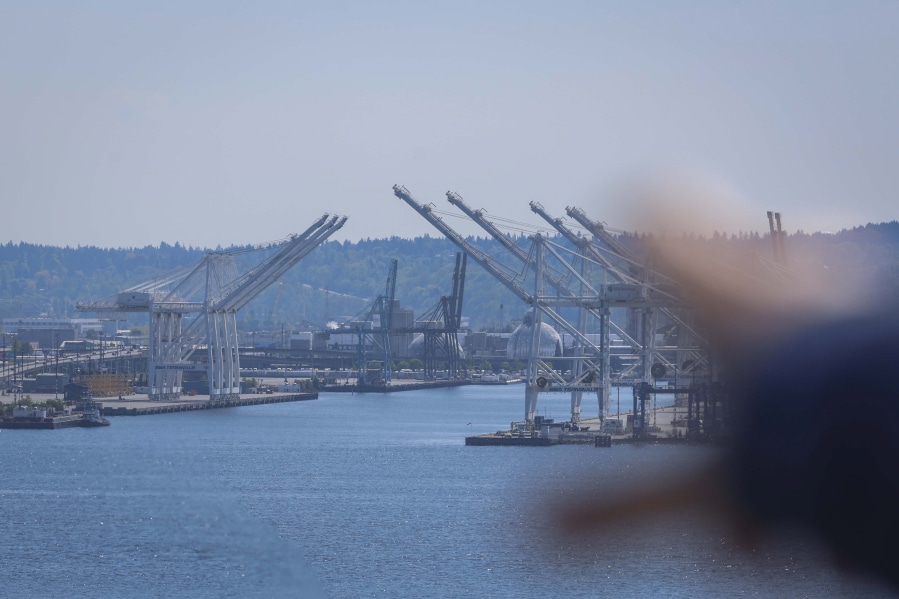With new tariffs hitting, WA tallies costs of trade war
Trade Turmoil Hits Washington's Economy Hard

This week, Washington state businesses and consumers are grappling with a wave of tariff announcements and fluctuating trade negotiations. The Trump administration has escalated tariffs on various countries, including a significant increase on Canadian exports, which now face a 35% tariff. As uncertainty looms, the impact of these trade policies on Washington’s economy remains unclear, particularly for key sectors like agriculture and tourism.
Economic Impact of Tariffs
The recent surge in tariffs has created a mixed bag of effects across Washington’s economy. While some industries, particularly shipping and tourism, have felt the brunt of these changes, others, like agriculture, have experienced less severe consequences. Container volumes at the ports of Seattle and Tacoma have declined, reflecting a downturn in shipping activity. Additionally, border crossings from Canada have dropped significantly, with a 29% decrease in July compared to the previous year. This decline has raised concerns among local businesses, especially in regions near the U.S.-Canada border, where nearly 45% of businesses reported negative impacts from reduced Canadian traffic.
Despite these challenges, some sectors, particularly agriculture, have shown resilience. The state exported $7.6 billion in produce and seafood last year, and while early data indicates a 15.7% drop in agricultural exports by weight in the first quarter of 2025, it remains uncertain whether tariffs are the primary cause. The Washington Department of Agriculture has noted that they have not observed any unexpected slowdowns, suggesting that other factors may be at play. In fact, some agricultural sectors may even benefit from the current trade climate, as evidenced by a recent commitment from Indonesia to double its annual purchases of U.S. wheat.
Job Market and Consumer Spending
The job market in Washington is also feeling the effects of the ongoing trade tensions. A recent federal jobs report indicated a significant slowdown in national hiring, which is expected to impact Washington’s employment figures. For the year ending in June, job growth in the state was a mere 0.1%, starkly contrasting with the national average of 1.1%. Economists attribute this sluggish growth to various factors, including high interest rates and challenges within the tech sector, alongside the potential influence of tariffs on manufacturing costs.
As prices rise due to tariffs, consumer spending is beginning to wane. In June, Seattle-area prices increased by 2.7% compared to the previous year, driven partly by higher costs for food and energy. While consumers have remained resilient thus far, experts warn that spending may continue to decline as the economic landscape evolves. The uncertainty surrounding tariffs and trade negotiations adds to the unpredictability, leaving businesses and consumers alike in a state of apprehension about the future.
Washington’s economy is navigating a complex landscape shaped by tariffs and trade policies, with varying impacts across different sectors. As negotiations continue, the full ramifications of these changes remain to be seen.
